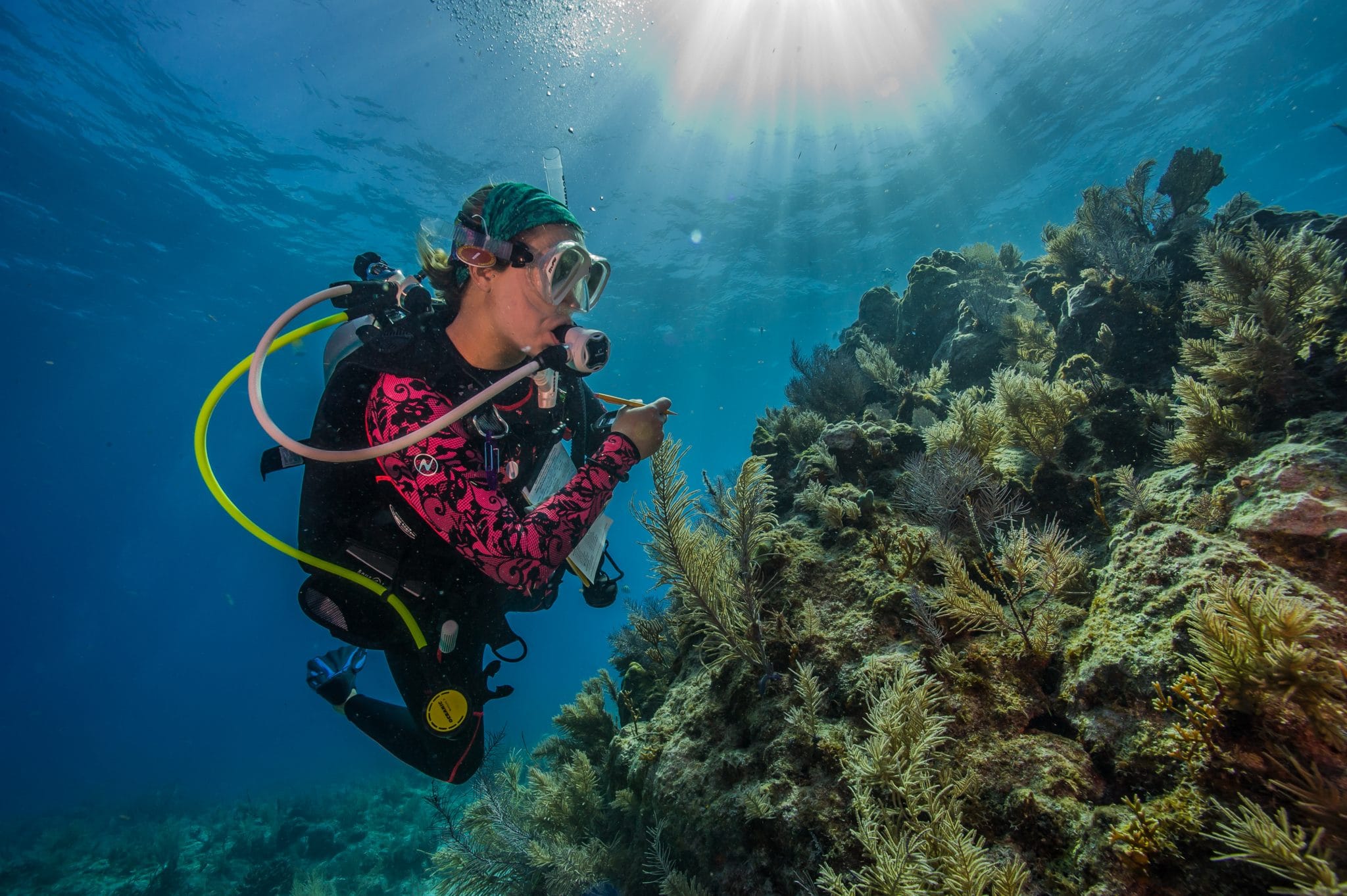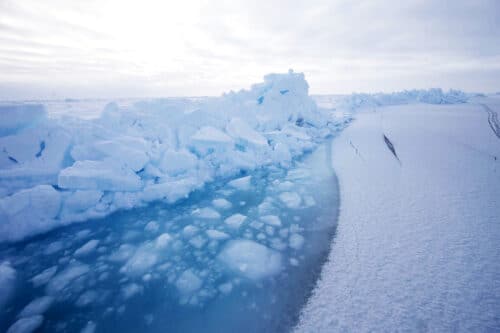How much of the Ocean has been explored?

For centuries, humankind has been fascinated by the sea, exploring it and venturing towards the blue horizon in search of new land and adventures.
Today, we know that the ocean makes up about 71% of the Earth’s surface, and it is the biggest ecosystem of the planet, holding 99% of all habitable space in the world. As much as we try to picture its vastness, however, it remains almost incomprehensible.
The five main ocean basins, the Pacific, Atlantic, Indian, Arctic and Southern Oceans contain 94% of the world’s wildlife and 97% of all the water on our blue planet.
Despite the central role it obviously plays in our planet’s balance, and the appeal the ocean has held to men since the beginning of time, we actually do not know much about its mysteries. In fact, most of the waters remain unexplored, uncharted and unseen by our eyes.
It might be shocking to find out, but only 5% of the ocean has been explored and charted by humans. The rest, especially its depths, are still unknown.
In this article, we will learn more about the science of oceanography and the history of ocean exploration throughout the centuries. We will also look at why it is complicated to explore the ocean, and why, at the same time, it is so important to understand its secret for the future of all life on Earth.
Let’s get started then!
What is Oceanography?
Also known as oceanology, oceanography is the study of the oceans. This discipline applies all branches of science (chemistry, geology, meteorology, biology, etc.) to the discovery of the ocean and its characteristics. Oceanography focuses on all the ocean’s features, including its ancient history, current condition, and future.
Oceanographers explore a range of subjects as wide as the ocean itself, and the information and lessons we learn from them are of the utmost importance in today’s world.
Why is Oceanography important?
If we take into consideration the size of the ocean, there seems to be no end to what can and will be uncovered in the science of oceanography. Furthermore, the ocean affects all forms of life on the planet, and knowing more about it can only help us in developing new technologies to safeguard its ecosystem and biodiversity, building a more sustainable future for everyone.
What are the main branches of Oceanography?
- Biological Oceanography
This branch focuses on the study of the sea’s plants and animals within the marine environment. This can include research on fishing and its impact on the ocean’s health, climate change, migration etc.
- Geological Oceanography
Geological oceanographers focus on the formations that make up the sea floor and how they change over time. This kind of research is essential for understanding seismic activity that could lead to more accurate tsunami and earthquake predictions.
- Physical Oceanography
This branch focuses on the relationship between the atmosphere, the seafloor and the coastline. It includes research on climate change, ocean transportation and human activities, pollution, etc.
- Chemical Oceanography
Another essential aspect oceanographers study is the chemical composition of seawater and how it is affected by climate change and weather, human activities, pollution, transportation and many other factors.
A brief history of Oceans Exploration
Oceanography is probably one of the latest additions to the various fields of science, but its origins date back several tens of thousands of years, since the time people began to explore their coastlines in rafts and venture towards the open sea.
Ancient Oceanography
- 4000 BC – First Sailing Vessels
Some of the first sailing vessels were created in ancient Egypt, probably just for moving in the Mediterranean Sea, in proximity of the mouth of the Nile River.
- 1000 BC – Deep Diving Begins
The Greek poet Homer described divers who could get as deep as 30 meters to collect sponges. The techniques they used involved holding onto a heavy rock and pouring oil into their ear canals to compensate the pressure.
- 600 BC – First Sea Routes
The ancient Phoenicians were known to be great sailors, and developed sea routes around the Mediterranean as well as into the Red Sea and Indian Ocean. They are thought to have gone all the way to Africa and England.
- 414 BC – Diving Used in Warfare
Thucydides, a Greek historian, wrote about how diving was used in warfare during the siege of Syracuse.
Oceanography in the Middle Ages and beyond
- 900 – Viking Expeditions Begin
Vikings were skilled seamen and they were among the first explorers to use the North Star to maintain course during sailing. They explored and colonized Iceland, Greenland, and Newfoundland.
- 1405 – Chinese Exploration
On this date, the Chinese fleet set out on seven voyages consisting of over 300 ships. These voyages were supposed to expand Chinese influence and to impress neighboring states.
- 1492 – Voyage of Christopher Columbus
This is the famous year in which the explorer Christopher Columbus set out on his historic voyage across the Atlantic, with the aim of circumnavigating Earth and reaching China and India. Instead, as we all know, he discovered North and South America.
- September 20, 1519 – First Circumnavigation of the World
Ferdinand Magellan and his crew departed from Portugal to begin a daring voyage that will become the first circumnavigation of the world.
- 1578 – First Plans for a Submarine
William Bourne, a British mathematician, drew up the first known plans for an underwater boat. Probably, this craft was never built.

More Recent Oceanography
- 1620 – First Submarine
Cornelis Drebbel, a Dutch physician, built history’s first submarine. The boat was constructed with wood, reinforced with iron plates and covered with leather. Inside, it was propelled by 12 oarsmen. The submarine is known to have made several trips in the Thames River at a depth of up to 4.6 meters.
- 1715 – First Waterproof Suit
Sir Pierre Rémy de Beauve, from the French Navy, developed one of the oldest known waterproof diving suits. The helmet was connected to two hoses that allow the diver to breathe.
- January 3, 1840 – First Modern Sounding
British Royal Navy officer Sir James Clark Ross carried out the first ocean deep-water sounding at 2,425 fathoms (or 4404 meters) in the South Atlantic Ocean. He used the traditional method of lowering a hemp rope over the side of the ship.
- 1853 – Discovery of Deep Sea Life
Edward Forbes’ theory of the absence of life in deep waters was questioned when Louis F. de Pourtales of the U.S. Coast Survey examined sounding operations that found signs of life in depths over 1,830 meters.
- 1861 – First U.S. Navy Submarine
The United States Navy contracted French Brutus de Villeroi to design a submarine for them. The vessel, known as the Alligator, was made of iron with small circular glass openings on top for light and moves thanks to sixteen hand-powered paddles on the sides. It was built with the intention of using it in the Civil War, but it never was.
- 1882 – First Oceanographic Research Vessel
The U.S. Fisheries Commission Steamer Albatross is the first vessel built by any government for the sole purpose of marine research. It had conducted important oceanographic research for nearly 40 years.

Modern Oceanography
- April 27, 1914 – First Acoustic Exploration of the Sea Floor
Canadian inventor Reginald Fessenden found a way to employ an oscillator to bounce sound waves between an iceberg and the sea floor. This technology lead to the development of we now know as sonar.
- 1925 – Mapping the Ocean Floor
Meteor, a German ship, sailed around the Atlantic Ocean recording detailed measurements of the ocean floor using echosounding technologies.
- 1934 – First Deep Ocean Dive
William Beebe and Otis Barton embarked on the first deep sea expedition, reaching a depth of 914 meters off the coast of Bermuda, discovering a previously unknown world.
- 1941 – World War II Research
During World War II, research lead to many new tools for ocean exploration: the first deep-ocean camera systems, early magnetometers, sonar technologies, and equipment for operating Remotely Operated Vehicles (ROVs).
- 1951 – Deepest Ocean Point Found
The British vessel HMS Challenger’s sonar located what seemed to be the ocean’s deepest point, with a depth of 10,929 meters, it is known as the Challenger Deep and it is located in the Pacific Ocean, in the Mariana Trench.
- January 23, 1960 – Deepest Ocean Dive
Jacques Piccard and two other men descended, inside a sturdy vehicle called Trieste, into the ocean to a depth of 10,911 meters, nearly seven miles. The explorers discovered amazing deep-sea life at these incredible depths.
- October 3, 1970 – NOAA Established
The National Oceanic and Atmospheric Administration (NOAA) was founded in the USA.
- September 19, 1979 – Deepest Dive in Dive Suit
Doctor Sylvia Earle set a new incredible record for a deep dive in a dive suit. Using new technology (a JIM suit), she walked on her own to a depth of 381 meters off the coast of Oahu, Hawaii.
- August 10, 1992 – Ocean Surface Mapping
The TOPEX/Poseidon satellite was launched and started providing oceanographic data that had been impossible to obtain before. TOPEX/Poseidon provided astoundingly accurate measurements of the surface height of nearly 95 percent of the Ocean. This new data helped developing a new understanding of ocean currents and their effect on global climate.
- 1995 – Seafloor Mapping from Space
Declassification of Geosat satellite radar altimetry data lead to worldwide mapping of the sea floor from space. Launched in 1985 by the U.S. Navy, Geosat measured the height of the sea surface by bouncing a radar beam off it. In 1995, the Navy finally declassified the Geosat data. David Sandwell of the Scripps Institution of Oceanography and Walter Smith of the National Oceanic and Atmospheric Administration were able to use this data to make detailed maps of the ocean floor. Their observed data significantly enhanced accuracy over earlier images of the ocean basin.
- 2010 – Census of Marine Life Completed
With a 10 year project that involved 2,700 scientists from 80 nations the first ever global census of ocean life was completed.
- 2017 – Seabed 2030 Announced
Seabed 2030 is a new international initiative that plans to map the ocean floor. Its objective, set by the Nippon Foundation of Japan and the General Bathymetric Chart of the Oceans (GEBCO), is to bring together all available bathymetric data to create a definitive map of the planet’s ocean floor by 2030.

Why it is Complicated to Explore the Ocean
95% of the ocean is unexplored and has never been seen by human eyes. You might be asking yourself: Why is that?
First of all, ocean exploration technology is relatively new. Of course, human beings have always explored the ocean’s surface, but it was only in the last few decades that we were able to start discovering its depths and floors.
Of course, with satellites we can chart the ocean surface temperatures, waters and color (which is an indicator of plant life), but we need much more advanced technology to map its deeper parts: like deep sea submarines and sonars. Also, it is difficult to see in deep water.
Another reason for the relatively small amount of ocean we have explored is that, at great depths, exploration conditions become extreme. The so-called “sunlight zone” ends at about 200 meters below the surface, making imaging much trickier, and pressure is extremely high.
Basically, it is easier to send a person in space than it is to get the bottom of the ocean! In fact, scientists know more about the surface of the Moon than they do about the ocean’s floor.
Why it is Important to Explore the Ocean
Why is it so important to explore the ocean and find out all we can about its huge ecosystem?
Global balance
Unfortunately, nowadays, the ocean is facing some serious issues that compromise its balance and that of the whole planet. One of the main threats to its balance is ocean pollution through oil spills, littering and improper manufacturing plants.
The ocean is not only the largest ecosystem on Earth, it also generates over half the oxygen we breathe on the planet through some tiny plants that live on its surface (Phytoplankton), and impacts climate on a global scale.
Protecting the ocean is therefore one of the biggest actions we can take to reduce the effects of climate change. And, the more we know about it, the more efficient we can become at safeguarding its health and that of the planet.
Animal and plant life
Biological oceanography studies life within marine environments. Ecosystems are often a delicate balance, and knowing more about the ocean’s inhabitants is crucial if we want to safeguard their life.
Research can help us better manage the impacts of modern society on the most important ecosystems on Earth with better policies and regulations.
Effects on human health
Knowing more about the ocean will also help in deepening our knowledge on the close relationship humans have with it. By better understanding the dynamics of this vast underwater universe, we will be able to improve the way we relate to it and appreciate its importance in our life: for our health and that of the planet, but also for the economy, transportation and recreation sectors.
References
https://oceanexplorer.noaa.gov/history/
http://www.seasky.org/ocean-exploration/ocean-timeline-menu.html
https://www.nationalgeographic.org/media/ocean-exploration-timeline/
https://divediscover.whoi.edu/history-of-oceanography/
https://sites.dartmouth.edu/dujs/2016/02/27/8271/
https://www.worldwideboat.com/news/miscellaneous/ocean-vs-space
https://oceanservice.noaa.gov/facts/exploration.html
https://oceana.org/blog/why-does-so-much-ocean-remain-unexplored-and-unprotected/
https://centerforsurfresearch.org/how-much-of-the-ocean-has-been-explored/
https://www.earth.com/earthpedia-articles/how-much-of-the-ocean-have-we-discovered/
https://www.bbc.com/future/article/20220111-why-nasa-is-exploring-the-deepest-oceans-on-earth
https://www.vice.com/en/article/pgk3z9/why-havent-we-explored-the-ocean-like-outer-space



